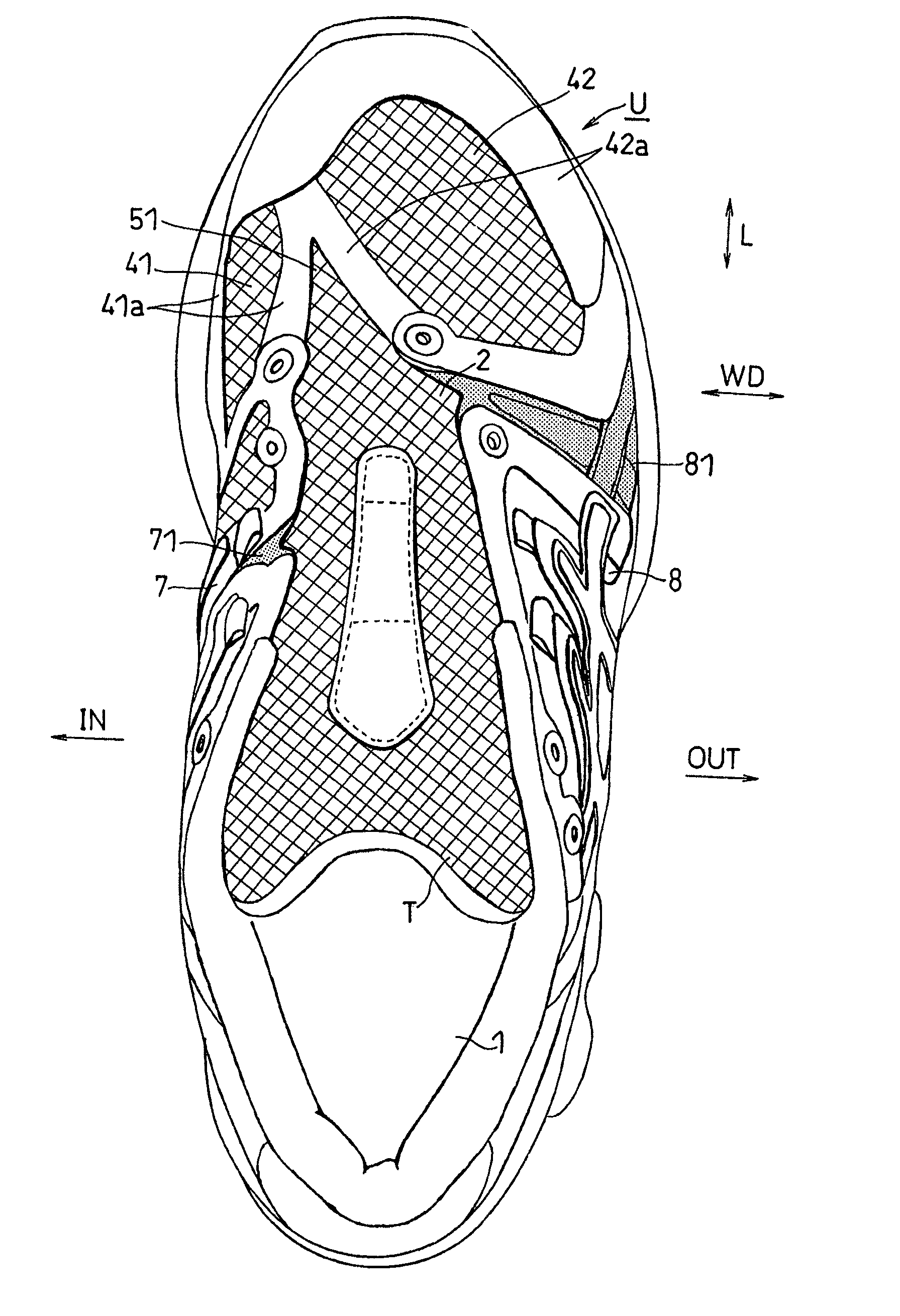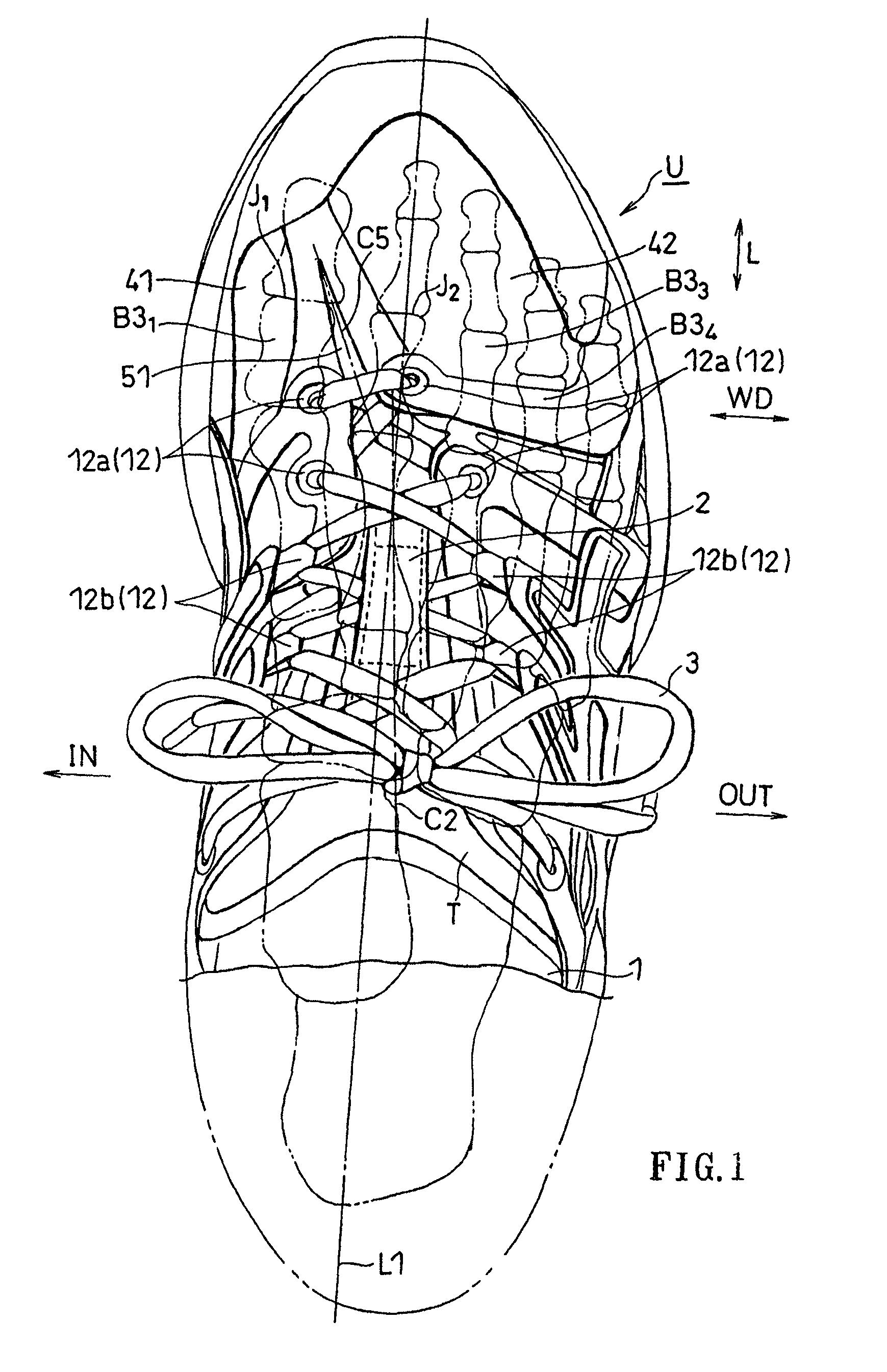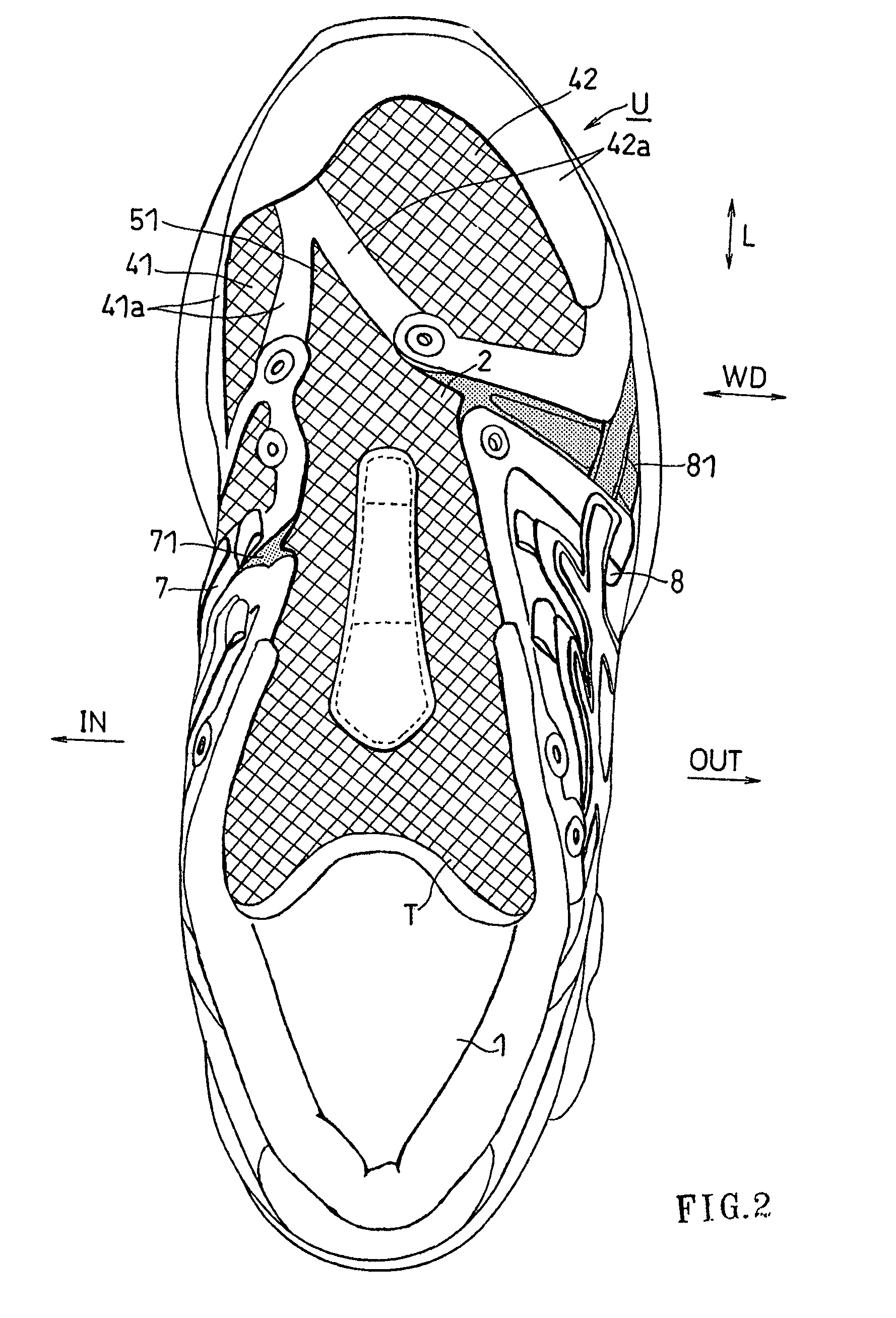Sports shoes having upper part with improved fitting property
a technology of upper and upper part, which is applied in the direction of upper, bootlegs, stiffners, etc., can solve the problems of not disclosing, not disclosing an upper in which a stretchable portion is provided in the medial or lateral side, and not disclosing, so as to achieve convenient fitting
- Summary
- Abstract
- Description
- Claims
- Application Information
AI Technical Summary
Benefits of technology
Problems solved by technology
Method used
Image
Examples
first embodiment
[0093]FIG. 1 to FIG. 5 each shows the shoe of First embodiment (for right foot). In addition, in FIG. 2, an area of the stretchable portion is as shown by dot-meshed, and a visible part of the mesh material is as shown by cross-hatching in order to easily understand a position that the stretchable portion and mesh material are provided (similarly described in FIG. 9). In the embodiment described below, a term “IN” means the medial side of the foot, and “OUT” means the lateral side of the foot.
[0094]As shown in FIG. 4, The shoe of First embodiment has a sole S absorbing a shock of landing and an upper U covering an instep of a foot. As shown in FIG. 1, the upper U is provided with a plurality of through-holes 12 such as an eyelet hole 12a and a loop 12b.
[0095]The upper fits the instep of the foot by the shoe lace 3 (an example of a fastening member) which is inserted into the through-holes 12 being fastened.
[0096]As shown in FIG. 1, the upper U has a first opening 1 from which a leg...
second embodiment
[0110]FIG. 6 and FIG. 7 each show the shoe of Second embodiment (for right foot).
[0111]As shown in FIG. 6 and FIG. 7, in Second embodiment, the deformation region 51 is formed as a generally slit-like shaped. Therefore, most of a region of the deformation region 51 can be evenly shrunk in the width direction WD of the foot. Then, a fabric of the deformation region 51 can be prevented from being wrinkled.
[0112]And, in First embodiment, the first and second reinforcement members 41a, 42a form a generally V-shape with being continuous with each other at an end portion (toe of the foot) of the deformation region 51.
[0113]On the other hand, in Second embodiment, the first and second reinforcement members 41a and 42a are individually formed and separated with each other at an end part of the deformation region. Therefore, when fitting, most of the deformation region 51, including the end part thereof, is easy to be shrunk in the width direction WD of the foot. And, in Second embodiment, t...
third embodiment
[0114]FIG. 8 to FIG. 11 each shows the shoe of Third embodiment (for right foot).
[0115]As shown in FIG. 10 and FIG. 11, the shoe of Third embodiment has a sole S absorbing a shock of landing and an upper U covering an instep of the foot. As shown in FIG. 8, the upper U is provided with a plurality of through-holes 12 such as an eyelet hole 12a and a loop 12b. And, with a shoe lace 3 (an example of a fastening member) which is inserted into the through-holes 12 being fastened, the upper U fits the instep of the foot.
[0116]As shown in FIG. 8, the upper U has a first opening 1 from which a leg extends upwardly during wearing and a second opening 2 which is located anterior to the first opening 1 and is closed with a tongue T. The first and second opening 1, 2 are continuous with each other in a front-rear direction of longitudinal direction L of the foot. The tongue T is used for covering the instep of the foot, and a front end of the second opening 2 may be generally located in proxim...
PUM
 Login to View More
Login to View More Abstract
Description
Claims
Application Information
 Login to View More
Login to View More - R&D
- Intellectual Property
- Life Sciences
- Materials
- Tech Scout
- Unparalleled Data Quality
- Higher Quality Content
- 60% Fewer Hallucinations
Browse by: Latest US Patents, China's latest patents, Technical Efficacy Thesaurus, Application Domain, Technology Topic, Popular Technical Reports.
© 2025 PatSnap. All rights reserved.Legal|Privacy policy|Modern Slavery Act Transparency Statement|Sitemap|About US| Contact US: help@patsnap.com



